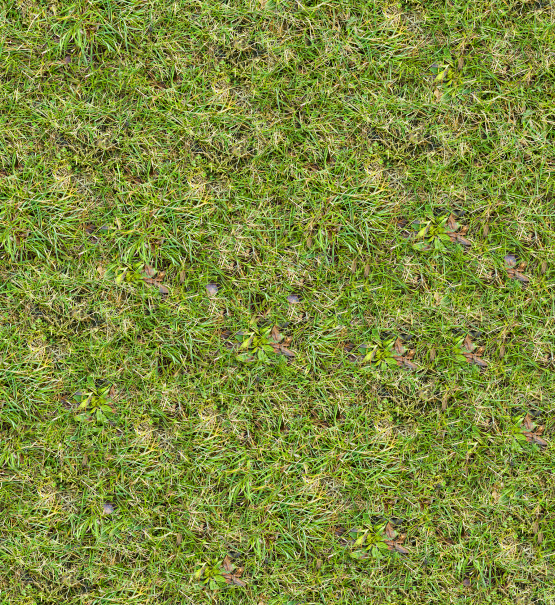
Life doesn’t exist in a vacuum; anytime something is planted, there’s going to be an ecosystem that develops. This ecosystem is going to include living plants, dead plants, microorganisms in the soil, and the various flora and fauna that are attracted to all this activity. Our lawns are no exception to this, and there’s a lot going on in your yard that you might not have thought about. One of the natural results of having a lawn is thatch. You’ve almost certainly heard of thatched roofs, which are made with dead, densely packed plants; thatch on your lawn isn’t too dissimilar.
Thatch is an accumulation of living and dead plant stems, roots and shoots that accumulate between the blades of grass on your lawn and the soil. When your lawn is cut, most of the leftover organic material naturally decomposes, but some of it may remain; when more debris is being produced than the ecosystem can consume, you get thatch. Some amount of thatch is basically inevitable; hard stems are difficult for microbes and wildlife to consume, so the longer and tougher your grass stems are, the more thatch you’re likely to produce.
Ecosystems are all about balance, and your lawn is an ecosystem. That means some thatch is good for your lawn, which in turn means too much or too little thatch is bad. The advantage of thatch is that it provides a layer of protection for your lawn; the sun can’t dry out soil as quickly when there’s thatch cover, and the organic matter helps regulate soil moisture. Too much thatch presents the problems just enough solves; thatch is dryer than your grass, so too much will burn up and leave the soil very dry when it’s sunny, and will absorb too much rain and lead to rot when there’s a downpour. An overabundance of thatch can also prevent pesticides from reaching your soil, reducing their effectiveness.
In order to get the right level of thatch, you need to monitor your soil’s pH. When your soil is too acidic, the microbes that help dead plant life decompose will be less common; like most organic matter, microbes are pretty acid averse. You’ll also need to be aware of what kind of grass you have planted in your lawn, what kinds of pesticides are being used, and how often your lawn is being fertilized.
All of these factors can be a lot for a layperson to keep track of. To summarize: the amount of thatch, the acidity of the soil, the type of grass and fertilizer and how often the fertilizer is being used all have to be accounted for. Most people don’t even have the tools to monitor all of this, let alone the expertise and time. A thorough understanding of your lawn’s ecosystem is essential, and that’s one of the many reasons professional Winnipeg lawn care is the way to keep your lawn looking pristine.